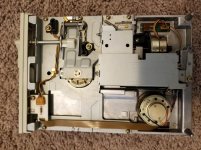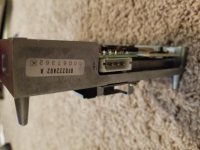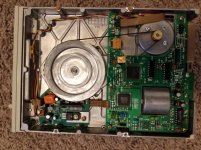ngtwolf
Veteran Member
Hi All,
Wasn't sure exactly which PC forum this goes in, since it's an IBM PS/1, but it's also a 386/20. In any case, the issue i'm having is that I've pulled out the 1.2MB drive and swapped it for a 360k drive (Amstrad 40046) since I plan to use this system for (among other things) IMD to support my older 8 bit machines. However, the PS/1 keeps detecting the 360k drive as 1.2MB. I've tricked it by putting an older 180k drive in and it detects it as a 360k, then put the other drive in.. All is good until, randomly, it'll redetect it as a 1.2MB drive and then of course the drive no longer works. Since it's not a typical Bios thing where I can just set the drive and be done with it (everything is done through configur.exe and the drive detection isn't an editable option), i'm not sure how to keep it 'locked' as 360k. I'd like to use this drive over the 180k since it matches the case, but I don't really want to open it up every few weeks either.
Anyway, if anyone has an idea (which i realize is probably a longshot since this is probably a rare situation), that would be great.
Thanks!
Wasn't sure exactly which PC forum this goes in, since it's an IBM PS/1, but it's also a 386/20. In any case, the issue i'm having is that I've pulled out the 1.2MB drive and swapped it for a 360k drive (Amstrad 40046) since I plan to use this system for (among other things) IMD to support my older 8 bit machines. However, the PS/1 keeps detecting the 360k drive as 1.2MB. I've tricked it by putting an older 180k drive in and it detects it as a 360k, then put the other drive in.. All is good until, randomly, it'll redetect it as a 1.2MB drive and then of course the drive no longer works. Since it's not a typical Bios thing where I can just set the drive and be done with it (everything is done through configur.exe and the drive detection isn't an editable option), i'm not sure how to keep it 'locked' as 360k. I'd like to use this drive over the 180k since it matches the case, but I don't really want to open it up every few weeks either.
Anyway, if anyone has an idea (which i realize is probably a longshot since this is probably a rare situation), that would be great.
Thanks!
Last edited:




